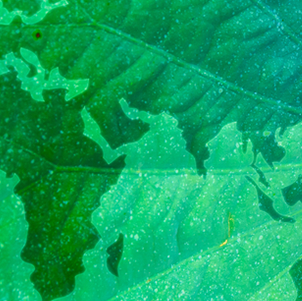Biomimicry 3.8 welcomed 18 new members to its biomimicry community this week, an elite multi-disciplinary group that makes up the 2016-2018 Biomimicry Professional (BPRo) certificate program cohort. In a highly competitive process, “each member was chosen because of their passion, qualifications, and dedication to biomimicry,” said Dr. Dayna Baumeister, program founder and lead instructor. “This 2016-2018 cohort undoubtedly represents another stellar group that is ready to learn what it means to lead in a world mentored by life’s genius.” Click here to view the full list of 2016 cohort members The globally renowned Biomimicry Professional (BPro) certificate program is a part-time, two-year course that integrates an accredited Master’s of Science in Biomimicry degree through Arizona State University with an in-person immersion program run by Biomimicry 3.8. The core purpose of the program is to train and mobilize an international, networked community of professional biomimics who become the leaders in this burgeoning practice. The program was created and is led by Baumeister, Biomimicry...Read More >
Read More
Posted in Biomimicry in Action, Newsworthy on March 29, 2016 by jenna
How can biomimicry help us create thriving, healthy communities that function in harmony with their ecosystems? It’s a question we ask ourselves often—and one we’ve set out to answer for clients who want their built environment projects to be inspired by nature’s genius. Built environment is a broad concept. It encompasses all human-made spaces that people use every day. That’s why it’s exciting to think about how biomimicry could help those spaces function more like nature does—in a more life-friendly way. We’re highlighting several work examples that show how we incorporated lessons from nature into built environment projects on our new Built Environment Services page. The work examples unpack the challenge for each project, then define the process and outcome of our biomimetic solutions. For example, take a look at the work we did for the Spring Mountain Visitors Gateway in Nevada: Learn more about biomimicry and Biomimicry 3.8, connect with us on Facebook, Twitter (follow @Biomimicry38) and LinkedIn.
Read More
Posted in Biomimicry in Action on March 25, 2016 by jenna
During our Happy Birthday Life celebration last month, we told you about how Life first appeared on Earth in the form of a single-celled organism on February 25. That’s according to Earth’s calendar year calculations, which compress the age of Earth (4.5 billion years) into one calendar year. According to that calendar where 144 years equals one second, if Earth was “born” on January 1, then February 25 would be the day life emerged. About 23 days (or about 285 million years) after the first single-celled organism appeared, photosynthesis evolved. That makes March 21 a major milestone on Earth’s calendar: The evolution of a new kind of energy that is produced, captured, and stored during a process that fits into a renewable system that has lasted for billions of years. Photosynthesis is the primary form of energy production that sustains biological life on our planet. By capturing sunlight energy in molecules, plants and algae have become a foundation that supports...Read More >
Read More
Posted in Inspired by Nature on March 18, 2016 by jenna

The next frontier is to capture and use the excess carbon that already exists in our economy and in our atmosphere.
Read More
Posted in Innovation Insights, Newsworthy on by jenna

Enter biomimicry, and a set of solutions that looks to nature for strategies to manage carbon.
Read More
Posted in Innovation Insights, Newsworthy on by jenna
We are always excited to share inspirations from nature—biomimicry, after all, is innovation inspired by nature. We’re extra excited to share this new video that takes you to South Africa and offers a glimpse into our biomimicry immersion workshop experience. Shot last November during our Discovering Nature’s Genius workshop in Leshiba Wilderness, Limpopo province, South Africa, the video is a beautiful, exciting snapshot of the experiences people have while exploring biomimicry in the field. Biomimicry 3.8 has been putting on workshops since 2002. We’re planning to host several more in 2016. Feeling inspired? Our next workshop will take participants to the Netherlands for the first European-based Biomimicry Thinking for Social Innovation workshop. The workshop will explore the fusion between biomimicry and social innovation—inviting participants to re-imagine organizational leadership, strategy, planning, and operations with inspiration from healthy and evolving ecosystems. The workshop will be taught by our own Dayna Baumeister and Toby Herzlich, founder of Biomimicry for Social Innovation. The six-day experience...Read More >
Read More
Posted in Biomimicry in Action, Inspired by Nature on March 10, 2016 by jenna
When in comes to bringing biomimicry to the built environment, what are three approaches architects should consider? What are the best practices when it comes to adding biomimicry to the design process? Biomimicry 3.8’s Jamie Dwyer will detail and discuss three benefits of bringing biomimicry to the built environment during Verdical Group’s free Biomimicry 2016: The Road to Resiliency conference on Friday, March 11. The panel, “Scale and Best Practices for Architects” will include Chris Garvin, Managing Partner for Terrapin Bright Green. The conference takes place in Irwindale, California, from 8 a.m. to 1 p.m. Space is still available; register here. Jamie is a Biomimicry 3.8 principal who has fused architecture and biology degrees into a career as a biologist at the design table. She’s worked on dozens of projects that have incorporated biomimicry—some of which she’ll discuss during the panel—throughout the years. What would she tell other designers anxious to incorporate biomimicry into their design work? For one, biomimicry...Read More >
Read More
Posted in Biomimicry in Action on March 4, 2016 by jenna

